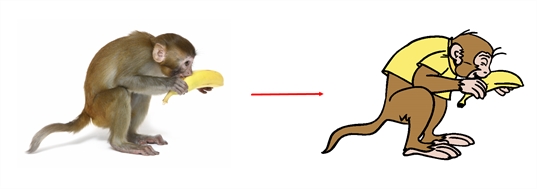- Modules
- Animation Techniques
- Traditional Animation
Traditional Animation
T-PRIN-002-002
Traditional animation usually refers to animation hand-drawn on paper. It was the process used for most of the productions throughout the 20th century.

An animator draws the characters, layout and backgrounds on paper. Each drawing in the animation would be slightly different than the one before it and the one following it, creating the illusion of movement when everything is put onto film.
Once all the animation has been drawn on paper, it is then photocopied or retraced onto transparent acetate sheets, called cels. After the line art is transferred onto the cels, paint is applied to the images, using a colour chart that is pre-determined for each character or element of the movie. Cels were essential to drawn animation since it freed up the animator from having to draw every element in the film on one single layer of paper. Instead, by using cels, each element had its own layer and could be animated separately.
With today's technology, this traditional animation technique of using cels to colour animation drawings is outdated. It is now possible to hand-draw animation, then scan the drawings to colour them digitally using computer software such as Harmony. So, contemporary animation has become a mix of traditional and digital techniques.
Full Animation
Animators will refer to full animation when they're working on a high-quality animated film. Often they will work with a high level of detail in the design and will try to animate characters and elements so they're believable and lifelike. This type of animation often requires a huge number of drawings to make it appear fluid and realistic.
Limited Animation
Limited animation applies to animated films that require fewer details. It is typically a very stylized and expressive type of animation and rarely realistic. Limited animation was introduced by studio artists at United Productions of America (UPA).

This method was primarily invented as a cost-effective way to create animated series for television, but it soon became a style of its own with its funky characters and background designs and its original use of colour.
Rotoscoping
This particular technique is used by animators when they want to trace live action sequence movements and turn them into drawings. They'll often use the action sequence as a basis and as an inspiration for character animation.

Next Topic
Digital Animation
Time Estimated 10 mins
Difficulty Level Beginner